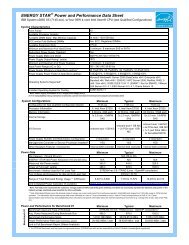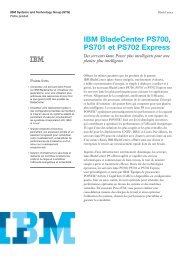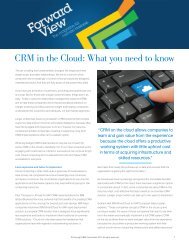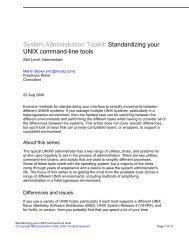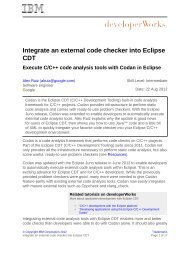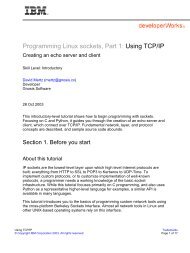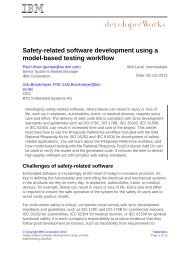TEC Workbook - IBM
TEC Workbook - IBM
TEC Workbook - IBM
You also want an ePaper? Increase the reach of your titles
YUMPU automatically turns print PDFs into web optimized ePapers that Google loves.
Match Rule – evaluate statements using: AND | OR<br />
Match Expression: URL | HTTP Header | XPath | Error Code<br />
Match Expression: URL | HTTP Header | XPath | Error Code<br />
• • •<br />
Match Expression: URL | HTTP Header | XPath | Error Code<br />
<strong>IBM</strong> Software<br />
Matching expressions can test the message in several ways. For instance, in this lab you’ll be specifying<br />
a matching expression that inspects the request URI for a specific pattern. Matching rules support the<br />
following types of matching expressions:<br />
● URL: A match template that inspects the URL for a specific pattern.<br />
● HTTP: A match template that inspects the value of a specified HTTP header for a specific<br />
pattern.<br />
● HTTP Method: A match template that compares the specified HTTP method (POST, GET,<br />
DELETE, etc.) against the value of the HTTP request line.<br />
● Error Code: A match template that matches against specific error codes that may have<br />
been raised by previously executed processing rules.<br />
● XPath: A match template that uses the specified XPath expression to inspect the contents<br />
of the XML message body.<br />
When a message arrives into the processing policy, the policy will look at each processing rule, starting<br />
with the first one, and evaluate its associated match expression. If the match expression evaluates to<br />
True, the actions in that rule will be executed, otherwise the policy will look at the next rule. Once a<br />
match rule evaluates to True, no other match rules will be evaluated. Only one processing rule will be<br />
executed.<br />
__1. In the General Configuration section of the form on the right side, locate the field labeled<br />
Multi-Protocol Gateway Policy and click the plus (+) to create a new processing policy.<br />
__2. In the Policy Name field at the top of the policy editor, type: ProductServicePolicy<br />
Lab 2 - Working with XML Page 35




